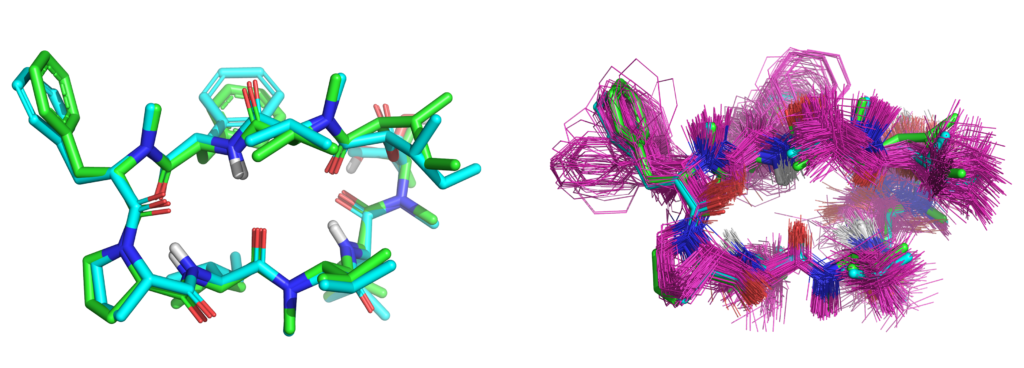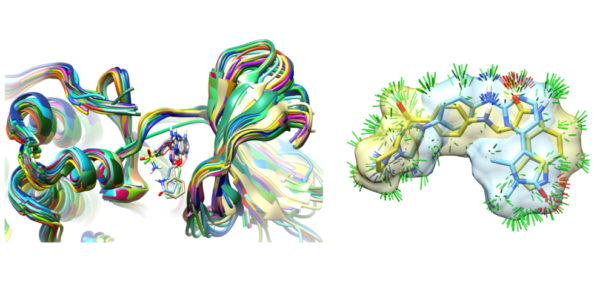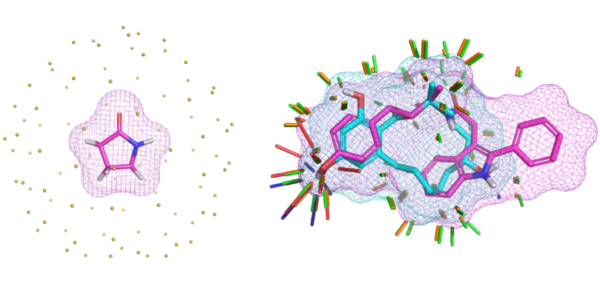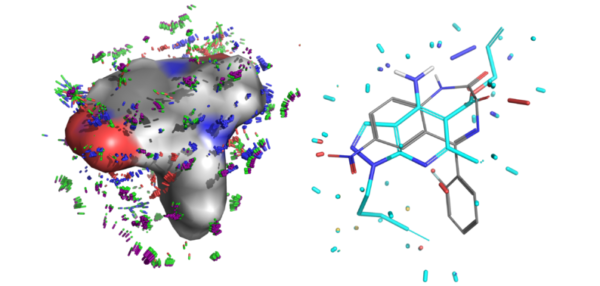Integrated Platform
The five modules of the BioPharmics Surflex Platform (Tools, Similarity, Docking, xGen, and Affinity) are fully integrated. The full software bundle provides a comprehensive predictive modeling workflow:
- 2D to 3D molecular conversion, with accurate chirality interpretation and enumeration facilities
- Conformer elaboration including complex macrocycles, also supporting the use of NMR restraints
- Protein structure preparation and alignment
- Docking for pose prediction or virtual screening
- Real-space modeling of ligands as conformational ensembles within X-ray density maps
Software is available for Windows, Linux, and Mac platforms, with easy deployment across on-premises workstations and laptops as well as cloud-based computing resources.




What’s New?
We’re hiring
September 22, 2023
BioPharmics is growing! We are delighted to have recently been acquired by Optibrium, and we are now looking to for the a Business Development Manager to to join us at Optibrium.
The role will focus on sales of the BioPharmics Platform for 3D ligand- and structure-based design.
The details on how to apply can be found here.
Optibrium and BioPharmics Merge
August 31, 2023
We are delighted to announce that BioPharmics LLC is now the BioPharmics Division of Optibrium Ltd. See the press release for additional details. We will be continuing our work with a bigger and stronger team!
Version 5.186 Surflex Platform Released
February 14, 2024
This is a minor release (with a full example set): Release Notes. A new set of Advanced Applications is now included in the manual and associated examples. The release also includes minor bug fixes and some improvements. See the Downloads page for details.
JCAMD: Macrocycle Optimization
August 3, 2023
We have published a comprehensive study of complex macrocycle optimization through careful application of NMR restraints combined with molecular docking, molecular similarity, and estimation of bound ligand strain with colleagues from BMS.
JMC: Strain/xGen Papers
January 27, 2023
We have published a comprehensive study of bound ligand strain with colleagues from Merck and BMS. This adds to a paper looking at peptide macrocycle strain energetics in the context of real-space refined ligand conformational ensembles. Both studies build on the xGen methodology where we showed that conformational ensembles, without atom-specific B-factors, are better models for ligands in terms of both fit to X-ray density and strain energy.
JCIM: QuanSA and FEP+
December 10, 2021
A focused machine-learning approach to inducing binding site models with QuanSA is shown to be complementary and synergistic with predictions from FEP+ across 17 targets. The paper reports significant reductions in prediction errors and consistent improvements in compound rank-ordering by combining the results of QuanSA and FEP+.